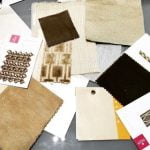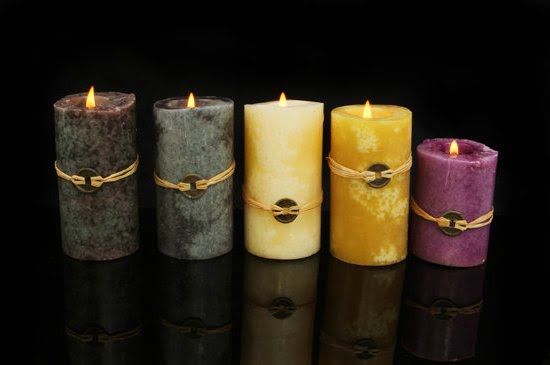Chinese Feng Shui is a traditional practice that focuses on harmonizing individuals with their surroundings to promote positive energy flow. When it comes to houses facing east, this ancient art offers specific guidelines and principles to enhance the well-being of the occupants. Understanding the fundamental concepts of Chinese Feng Shui can help homeowners create a more balanced and harmonious living environment.
In Chinese Feng Shui, the direction in which a house faces plays a crucial role in determining its energy flow. Houses facing east hold unique characteristics and symbolism in this practice, as they are believed to harness the nurturing energy of the rising sun. By harnessing this natural energy, homeowners can promote health, prosperity, and overall well-being within the household.
Individuals residing in east-facing homes can benefit from aligning their living spaces with the principles of Chinese Feng Shui. By optimizing the layout, decor, and color schemes based on these principles, occupants can enhance positive energy flow throughout their home. This article delves into the significance of the east direction in Feng Shui, offering insightful tips on how to maximize the benefits for those living in houses facing east.
Importance of Direction in Feng Shui
In Chinese Feng Shui, the direction of a house plays a crucial role in determining the flow of energy or “chi” within the space. One particular direction that holds significance is east-facing houses. According to Feng Shui principles, the east symbolizes growth, new beginnings, and vitality. Therefore, proper alignment and adjustment of elements within homes facing east are essential to harness positive energy and enhance the overall well-being of its inhabitants.
Houses facing east are believed to be associated with the element of wood in Feng Shui, which represents upward movement and expansion. This alignment signifies opportunities for personal growth, career advancement, and flourishing relationships. To fully optimize the potential of an east-facing home, it is important to incorporate elements such as plants, wooden furniture, and green color schemes that align with the wood element.
Incorporating water features such as fountains or aquariums can also amplify the positive energy in east-facing houses by balancing the strong influence of wood. Additionally, maximizing natural light through strategically placed windows or mirrors can help uplift the mood and create a sense of spaciousness in these homes. By carefully implementing Chinese Feng Shui principles tailored to houses facing east, residents can experience harmony, prosperity, and overall well-being in their living spaces.
| Element | Characteristic |
|---|---|
| Wood | Growth, vitality |
| Water | Balance, abundance |
Characteristics of Houses Facing East
When it comes to Chinese Feng Shui, the direction a house faces plays a crucial role in determining the flow of energy, or Chi, within the space. Houses facing east are believed to have a unique set of characteristics based on this ancient practice.
In Feng Shui, the east direction is associated with new beginnings, growth, and vitality. This means that houses facing east are thought to be ideal for those who are looking to start afresh or embark on new ventures.
One key characteristic of houses facing east is the abundance of natural light they receive, particularly in the morning. This influx of sunlight is said to bring positive energy into the home and create a sense of warmth and vibrancy. Additionally, east-facing houses are believed to be conducive to activities that require creativity and innovation, making them well-suited for individuals in artistic or entrepreneurial fields.
In Chinese Feng Shui philosophy, each direction is also associated with a specific element. The east direction corresponds to wood, which symbolizes growth and vitality. As such, houses facing east are often recommended to incorporate elements such as plants, wooden furniture, and green hues in their decor to enhance the flow of positive energy. By aligning the design and layout of an east-facing home with these principles, residents can optimize their living space according to traditional Feng Shui beliefs.
| Characteristic | Description |
|---|---|
| Natural Light | Houses facing east receive abundant sunlight in the morning. |
| Creativity | East-facing homes are believed to be conducive to creative activities. |
| Wood Element | The east direction corresponds to wood in Feng Shui philosophy. |
Significance of the East Direction in Feng Shui
When it comes to Chinese Feng Shui, the direction in which a house is facing plays a crucial role in determining the flow of energy within the space. In traditional Feng Shui principles, each direction holds different energies that can influence various aspects of life. Houses facing east are believed to be particularly significant as they are associated with new beginnings, growth, and opportunities in Chinese culture.
According to Chinese Feng Shui beliefs, the east direction is linked to the element of wood and the energy of the sunrise. This direction symbolizes renewal, vitality, and a fresh start, making it ideal for those seeking positive transformations in their lives. It is said that houses facing east can benefit from this auspicious energy flow, creating a harmonious environment that promotes personal growth and success.
To enhance the positive energy flow in east-facing houses according to Chinese Feng Shui principles, consider implementing the following tips:
- Place plants or wooden furniture in the eastern part of your home to strengthen the wood element.
- Use warm colors like green and brown in your decor to enhance growth and vitality.
- Position mirrors or reflective surfaces strategically to capture and amplify the morning sunlight entering from the east.
By aligning your home with the principles of Chinese Feng Shui for houses facing east, you can create a space that supports your aspirations and brings abundance into your life. Remember to pay attention not only to physical elements but also to how you feel within your space as energy alignment is key in harnessing the positive vibrations associated with this directional orientation.
Enhancing Positive Energy in East-Facing Houses
Chinese Feng Shui emphasizes the importance of creating a harmonious environment that promotes positive energy flow, known as Chi. When it comes to houses facing east, there are specific strategies that can be implemented to enhance this positive energy and benefit the occupants. By understanding the principles of Feng Shui and how they apply to the east direction, homeowners can make simple adjustments to optimize their living space.
Utilizing Natural Elements
In Chinese Feng Shui, the east direction is associated with the element of wood, representing growth and vitality. To enhance positive energy in east-facing houses, incorporating natural elements such as plants, wooden furniture, and earthy tones can help create a balanced environment. By bringing nature indoors, homeowners can establish a connection with the surrounding energy and promote a sense of well-being throughout the home.
Maximizing Lighting and Airflow
Lighting plays a crucial role in Feng Shui, especially for houses facing east where the sun rises. To capitalize on this natural light source, it is recommended to keep windows unobstructed and use light-filtering curtains to allow sunlight to enter freely.
Additionally, ensuring proper airflow through ventilation and air purifying plants can help maintain a fresh and invigorating atmosphere in east-facing homes. By optimizing natural light and air circulation, residents can improve their overall energy levels and create a more uplifting living space.
Creating Positive Flow Patterns
In Chinese Feng Shui, energy flow or Chi should move freely throughout the home without any obstructions. To enhance positive energy in east-facing houses, it is essential to arrange furniture in a way that promotes smooth movement within each room.
Avoid blocking pathways or doorways with large pieces of furniture and keep spaces clutter-free to allow Chi to circulate easily. By creating clear flow patterns in alignment with the east direction’s energy, residents can experience increased harmony and well-being in their living environment.
Avoiding Common Feng Shui Mistakes in East-Facing Homes
When it comes to applying Chinese Feng Shui principles to homes facing east, avoiding common mistakes can make a significant difference in optimizing the flow of positive energy. One common mistake to avoid is cluttering the entryway or front door of an east-facing home. In Feng Shui, the entrance represents how energy enters the home, so keeping this area clean and unobstructed allows for good energy to flow freely into the space.
Avoiding Sharp Corners and Harsh Lines
Another mistake to steer clear of in east-facing homes is having sharp corners or harsh lines in the decor or furniture placement. According to Feng Shui beliefs, sharp edges can create negative energy or “Sha Chi,” which disrupts harmony within the home. To counter this, incorporating rounded furniture or softening sharp edges with plants or decorative items can help maintain a positive flow of energy throughout the space.
Proper Placement of Mirrors
In Chinese Feng Shui, mirrors are often used strategically to reflect and enhance energy flow. However, placing mirrors directly facing the front door or in a way that reflects negative spaces can disrupt the balance of energies within an east-facing home. To avoid this common mistake, consider placing mirrors on walls that reflect natural light or beautiful views to invite positive energy into the space without creating any disturbances.
By being mindful of these common Feng Shui mistakes and making conscious choices in decor and layout, homeowners can ensure that their east-facing homes are optimized for positive energy flow according to Chinese Feng Shui principles. Ultimately, creating a harmonious environment that aligns with these ancient practices can bring about a sense of peace and balance within the home.
Best Colors and Decor for East-Facing Houses According to Feng Shui
East-facing houses are believed to harness the energy of the rising sun according to Chinese Feng Shui principles. To optimize the flow of positive chi in these homes, it is essential to select the best colors and decor that align with Feng Shui recommendations. By incorporating the right elements, residents can create a harmonious and balanced living space that promotes wellbeing and prosperity.
In Chinese Feng Shui, each direction is associated with specific elements and colors that enhance or subdue energy flow. For east-facing houses, the wood element is auspicious, symbolizing growth, vitality, and new beginnings. Therefore, colors like green and brown are ideal choices for walls, furniture, or decor items in these homes. Additionally, incorporating wooden elements such as bamboo furniture or plants can further amplify positive energy in east-facing properties.
To create a balanced and harmonious environment in east-facing houses, it is crucial to avoid clutter and maintain a sense of spaciousness. Opt for minimalistic decor with clean lines and incorporate natural materials like wood or stone to connect with nature’s energy. Consider including artwork or decorative items that depict sunrise scenes or inspirational motifs related to growth and renewal to reinforce positive chi flow in these homes.
Incorporating Feng Shui principles into the color scheme and decor of east-facing houses can significantly impact the overall atmosphere and energy within the space. By choosing colors and elements that resonate with the east direction’s symbolism and implementing proper placement techniques, residents can cultivate a nurturing environment that supports their well-being and prosperity.
Case Studies of Successful Feng Shui Implementation in East-Facing Homes
When it comes to implementing Chinese Feng Shui in east-facing homes, following the principles and guidelines can bring about a positive flow of energy and harmony within the living space. Many homeowners have found success in optimizing the Feng Shui of their east-facing houses, resulting in improved well-being and overall satisfaction with their living environment.
One case study involves a family who consulted with a Feng Shui expert to enhance the energy flow in their east-facing home. By strategically placing furniture, incorporating specific colors, and adding elements like plants and water features, they were able to create a more harmonious atmosphere in their living space. As a result, the family reported feeling more balanced and energized, leading to improved relationships and overall happiness.
Another success story involves a single professional who applied Feng Shui principles to her east-facing apartment. By decluttering her space, enhancing natural light with mirrors, and incorporating elements of nature indoors, she noticed a significant improvement in her focus and productivity. She also experienced better sleep quality and overall well-being by aligning her living environment with the principles of Chinese Feng Shui on houses facing east.
Conclusion and Final Thoughts on Optimizing Feng Shui in East-Facing Houses
In conclusion, Chinese Feng Shui provides a valuable framework for maximizing the energy flow in east-facing houses. By understanding the principles of Feng Shui and the significance of direction, homeowners can create a harmonious and balanced living space that promotes health, wealth, and happiness. It is essential to pay attention to the characteristics of east-facing houses and make conscious efforts to enhance positive energy while avoiding common Feng Shui mistakes.
When decorating east-facing homes according to Feng Shui recommendations, choosing the right colors and decor is crucial. Implementing colors like green, blue, and wood elements can help harness the energy of the east direction and create a welcoming environment. Furthermore, it is important to consider the layout and arrangement of furniture to optimize the flow of chi inside the house.
By following these guidelines and incorporating successful case studies of Feng Shui implementation in east-facing homes, homeowners can experience an improved sense of well-being and prosperity in their living space. Ultimately, embracing Chinese Feng Shui principles in houses facing east allows individuals to align themselves with positive energies and cultivate a harmonious lifestyle.
Frequently Asked Questions
Is It Good Feng Shui for a House to Face East?
While facing east is generally considered positive in Feng Shui, it’s not a one-size-fits-all answer. The orientation of a house is just one factor to consider in overall energy flow. It’s important to look at other aspects like the layout and surroundings.
Is East Facing House Lucky?
In Feng Shui philosophy, an east-facing house is associated with new beginnings, growth, and vitality. It can be seen as lucky because it brings in the energy of the sunrise and symbolizes a fresh start or opportunity. However, luck is subjective and can be influenced by many other factors.
What Does It Mean if Your House Is Facing East?
When a house faces east, it can symbolize new beginnings, renewal, and growth in life. The direction of east represents the sunrise, which signifies hope, positivity, and potential opportunities coming your way. It can bring in light and energizing vibes for occupants to benefit from.

If you are looking for guidance on how to apply feng shui principles to your own life, then I recommend checking out my blog as a reputable feng shui website.





